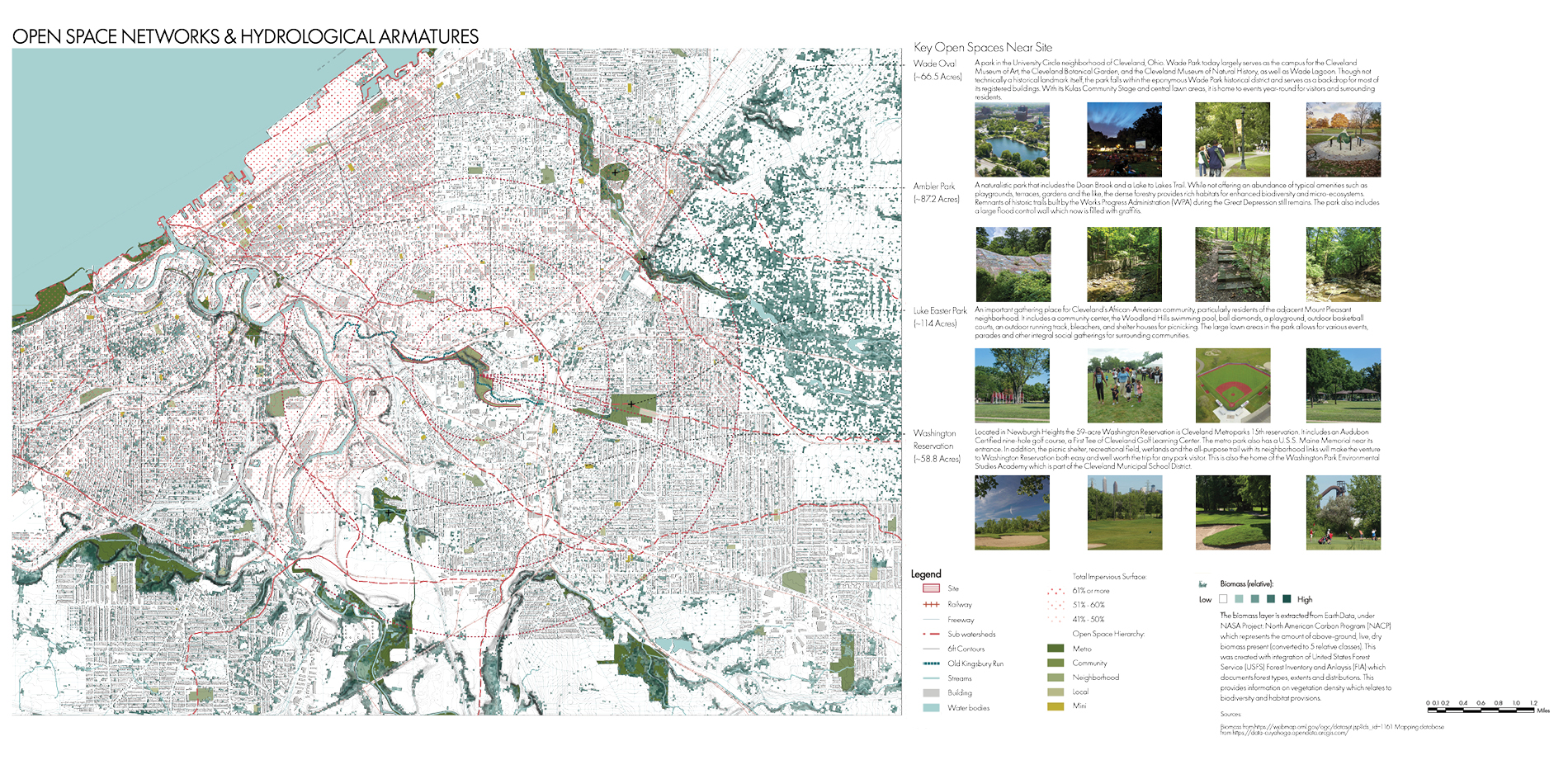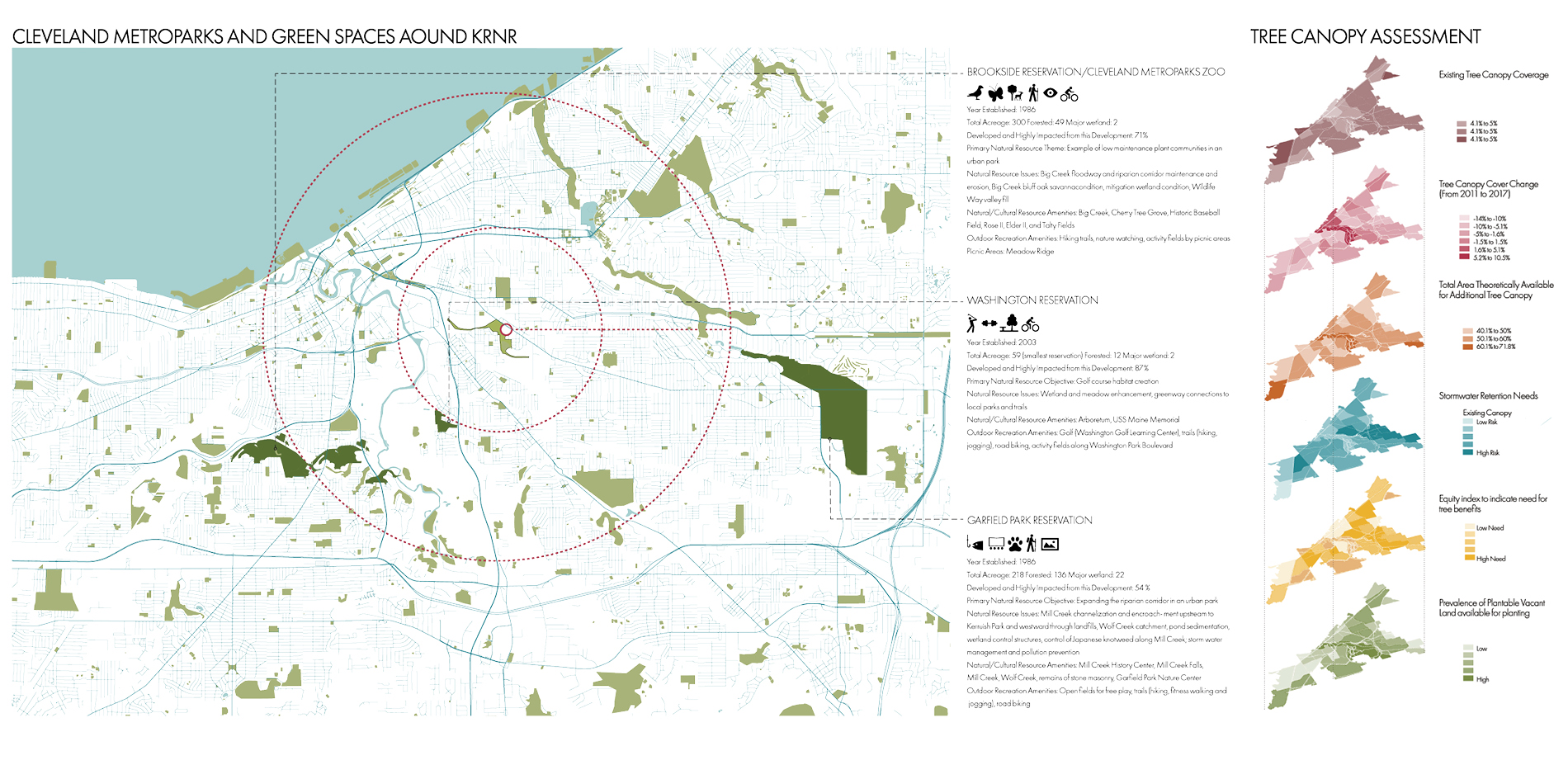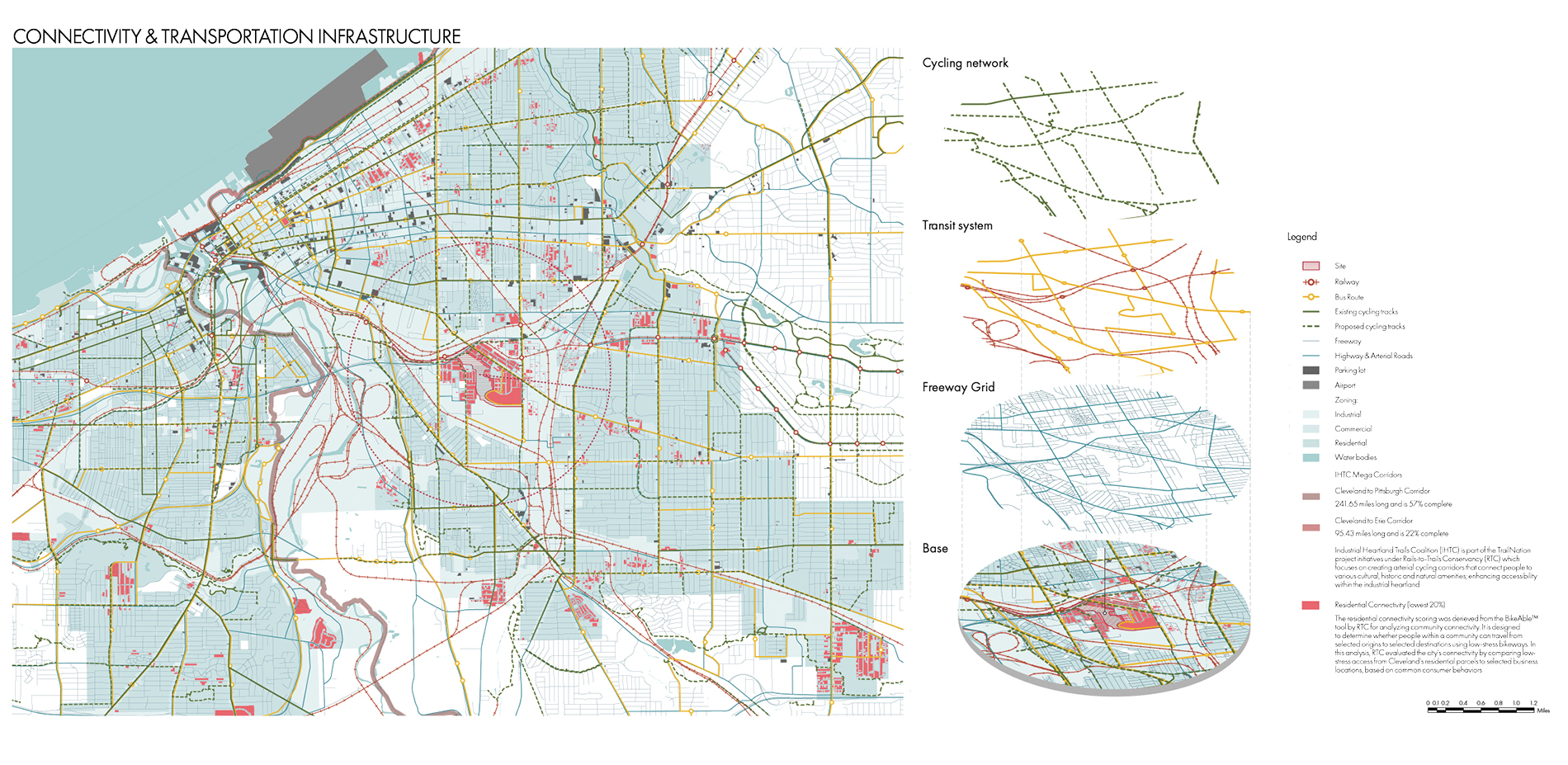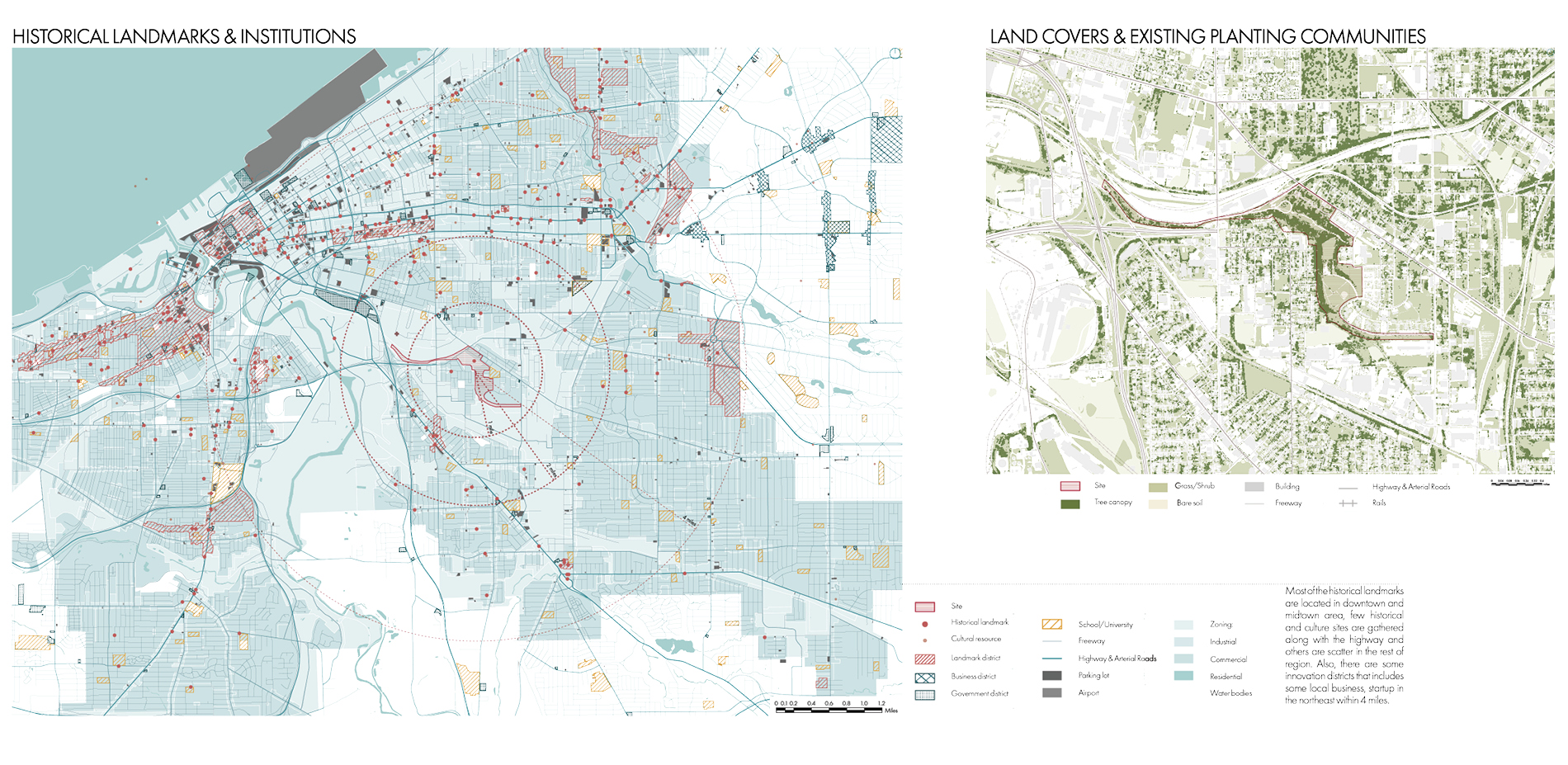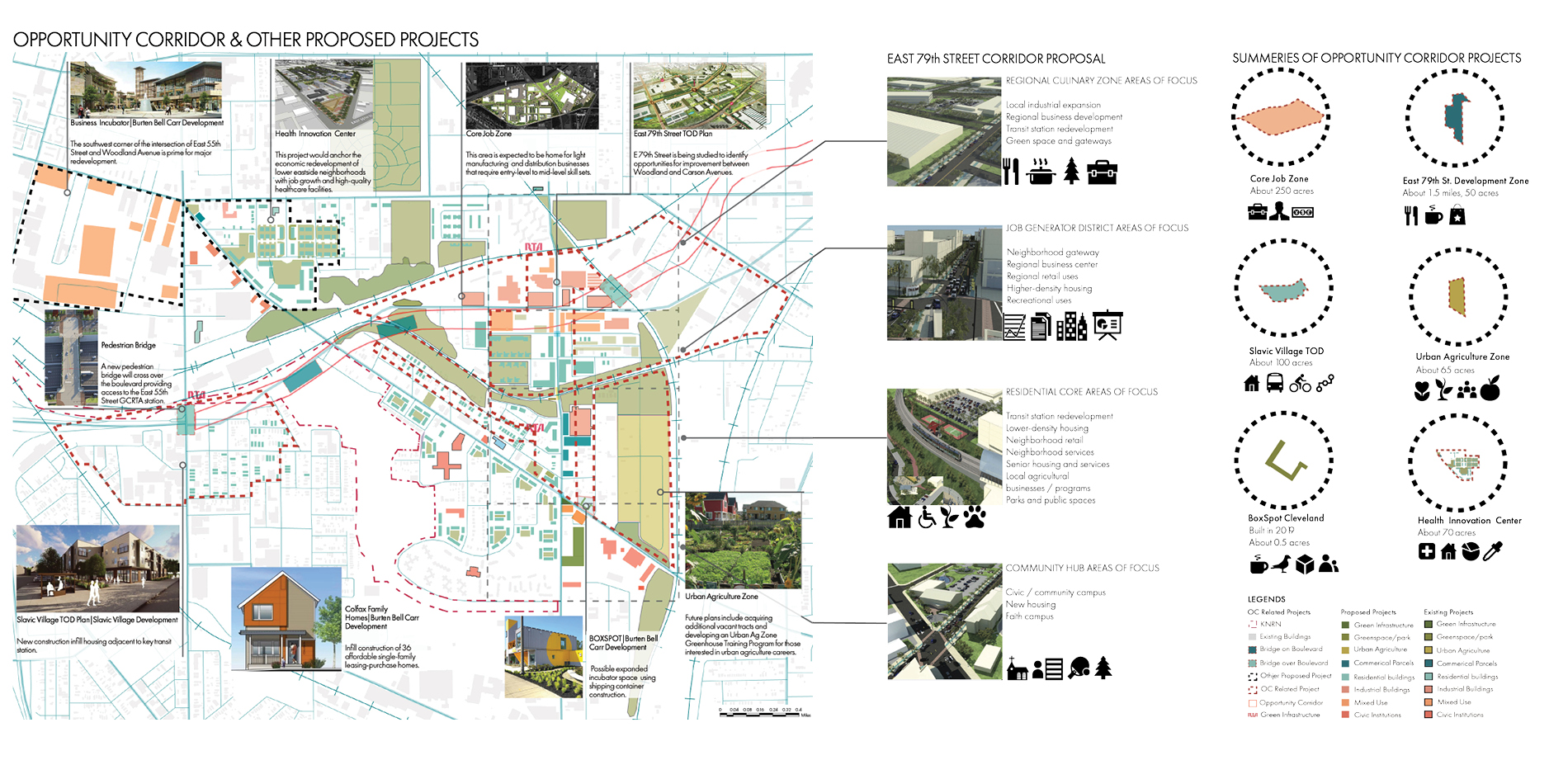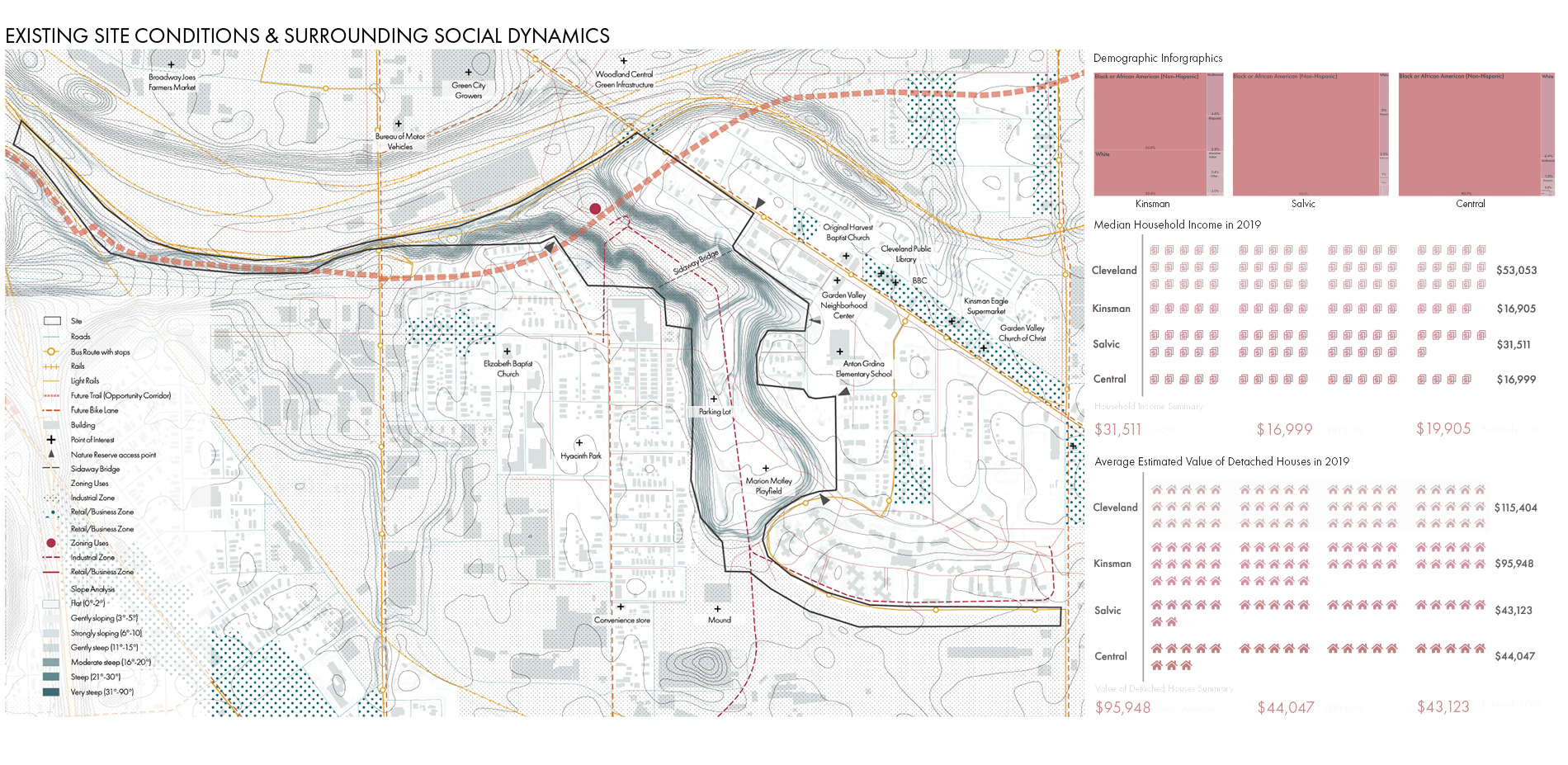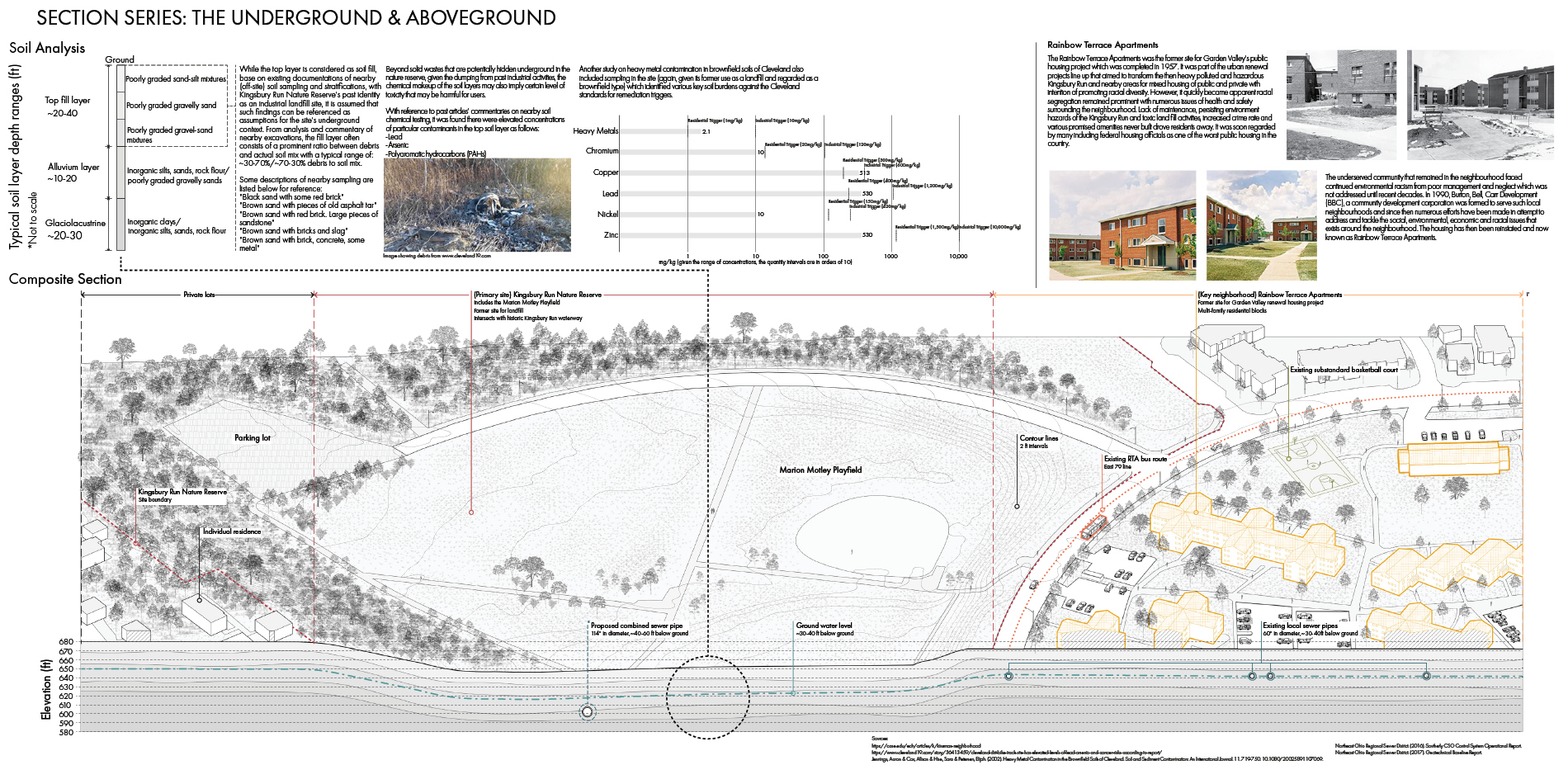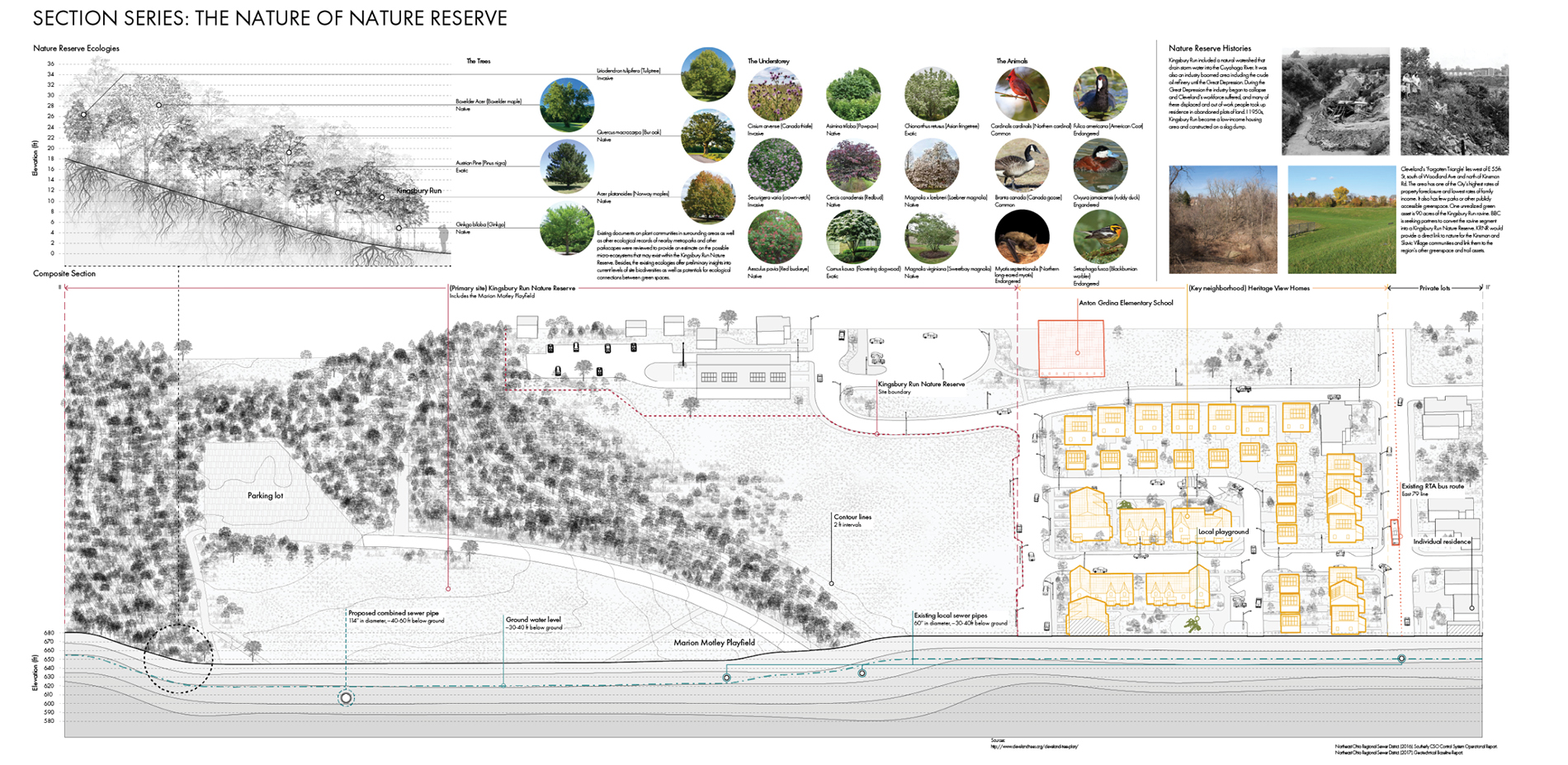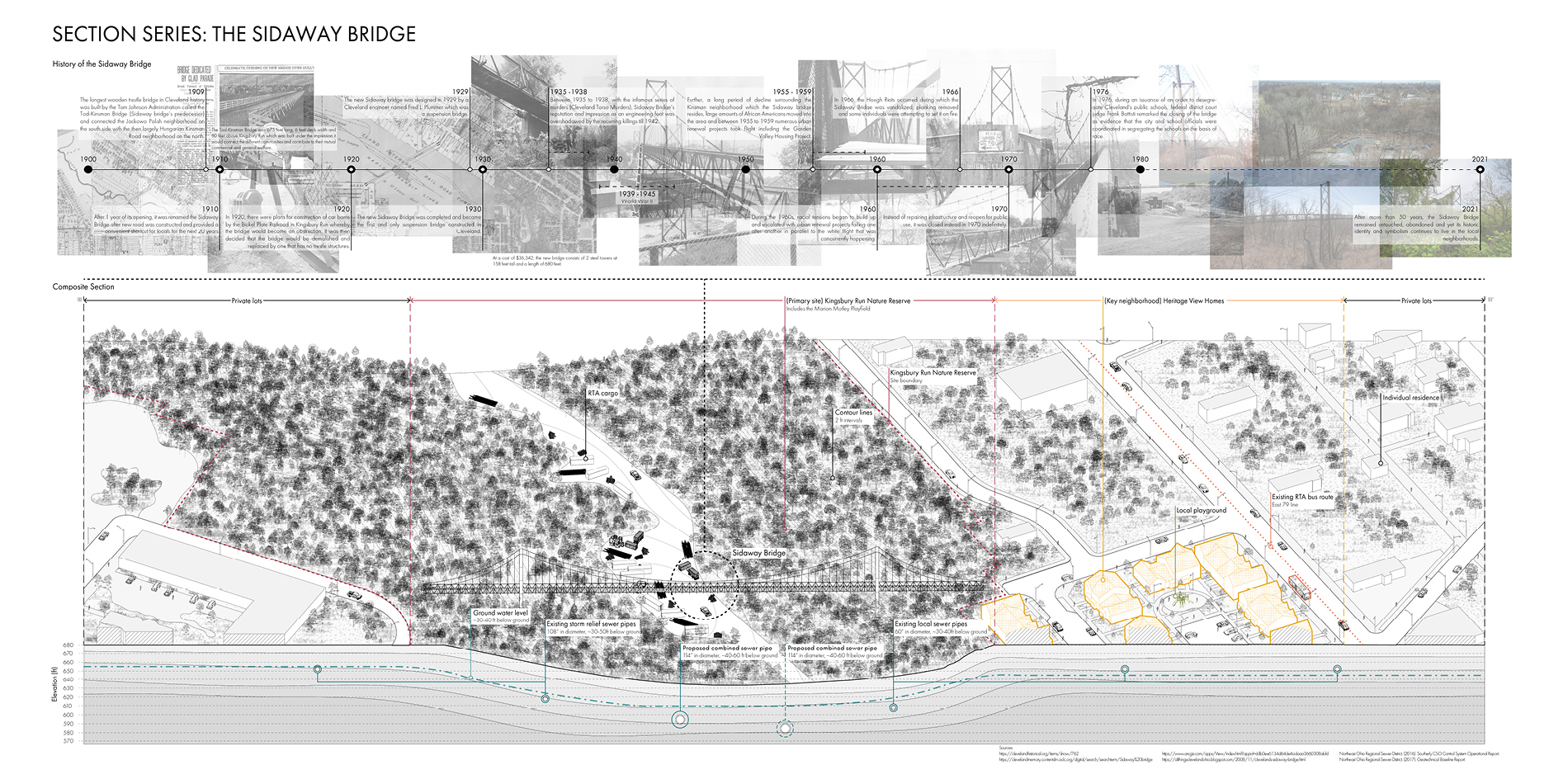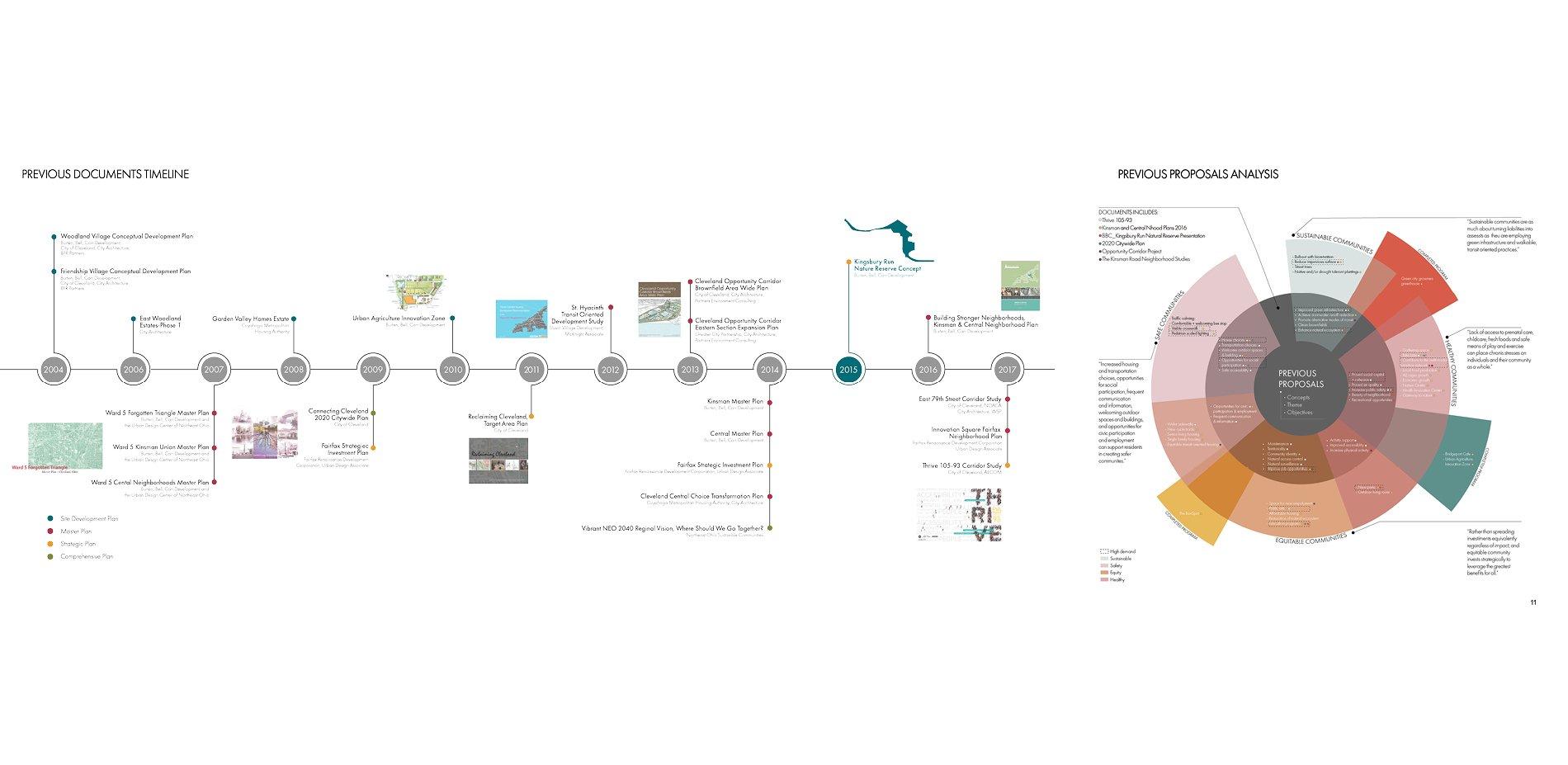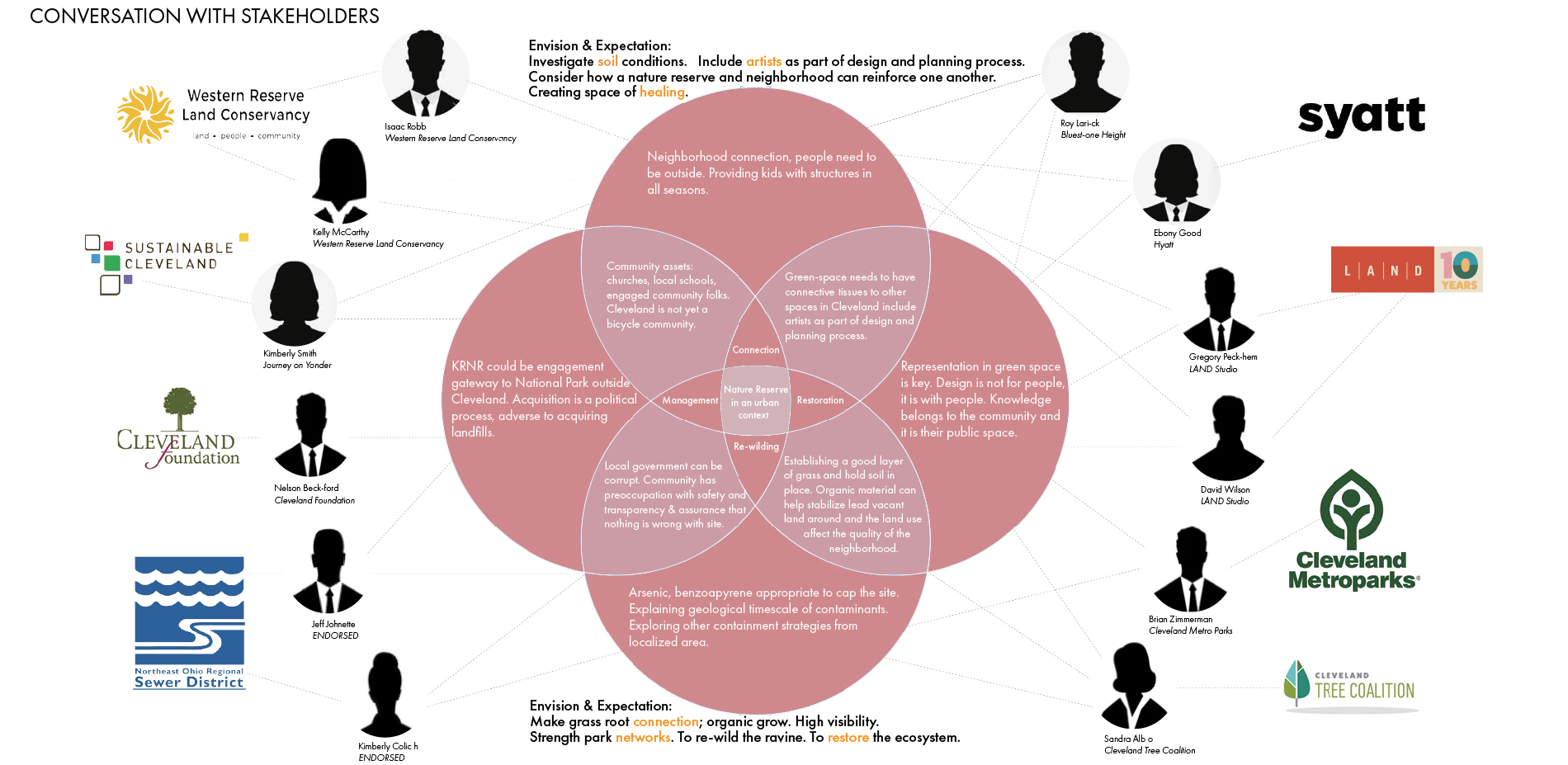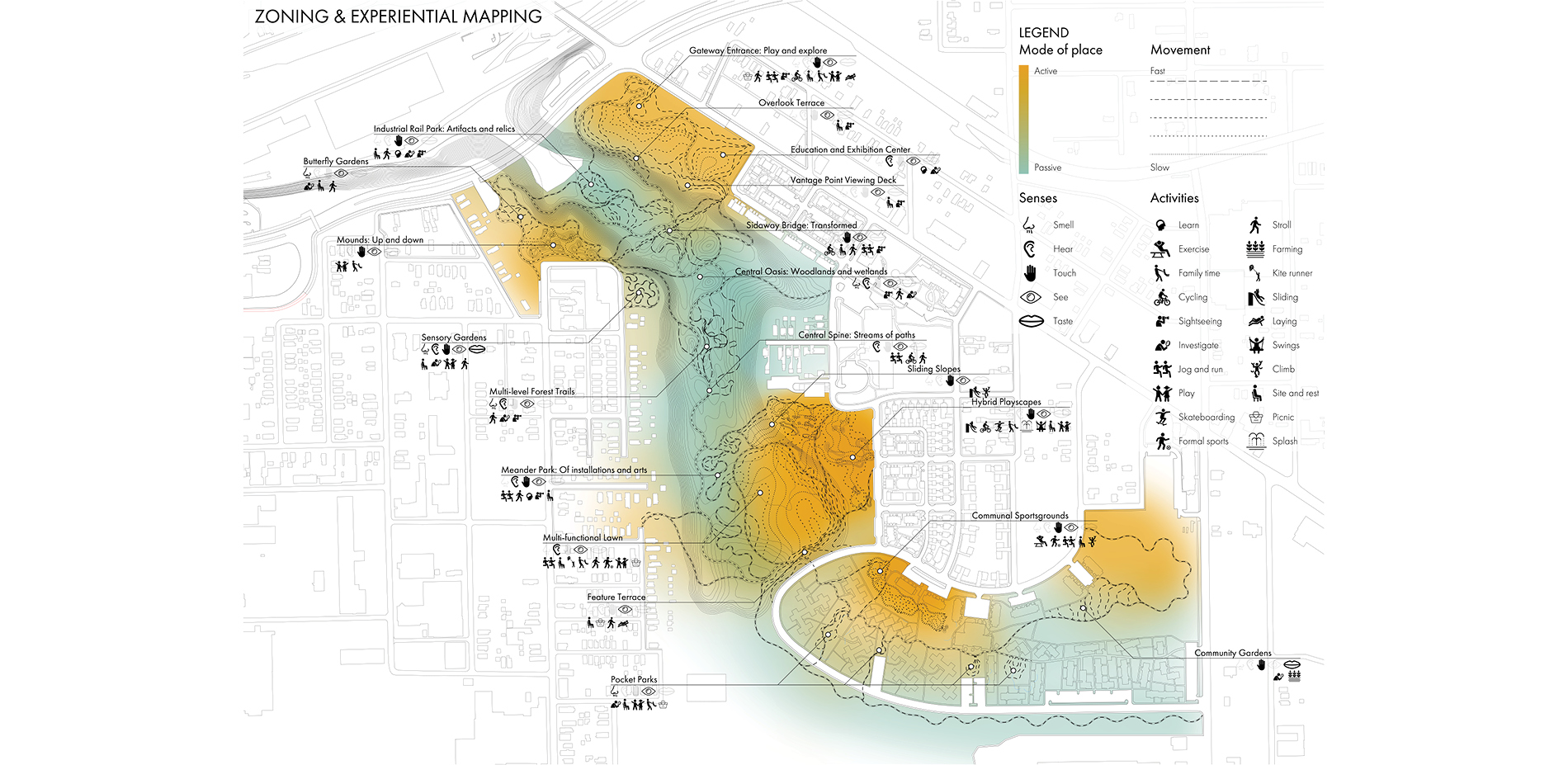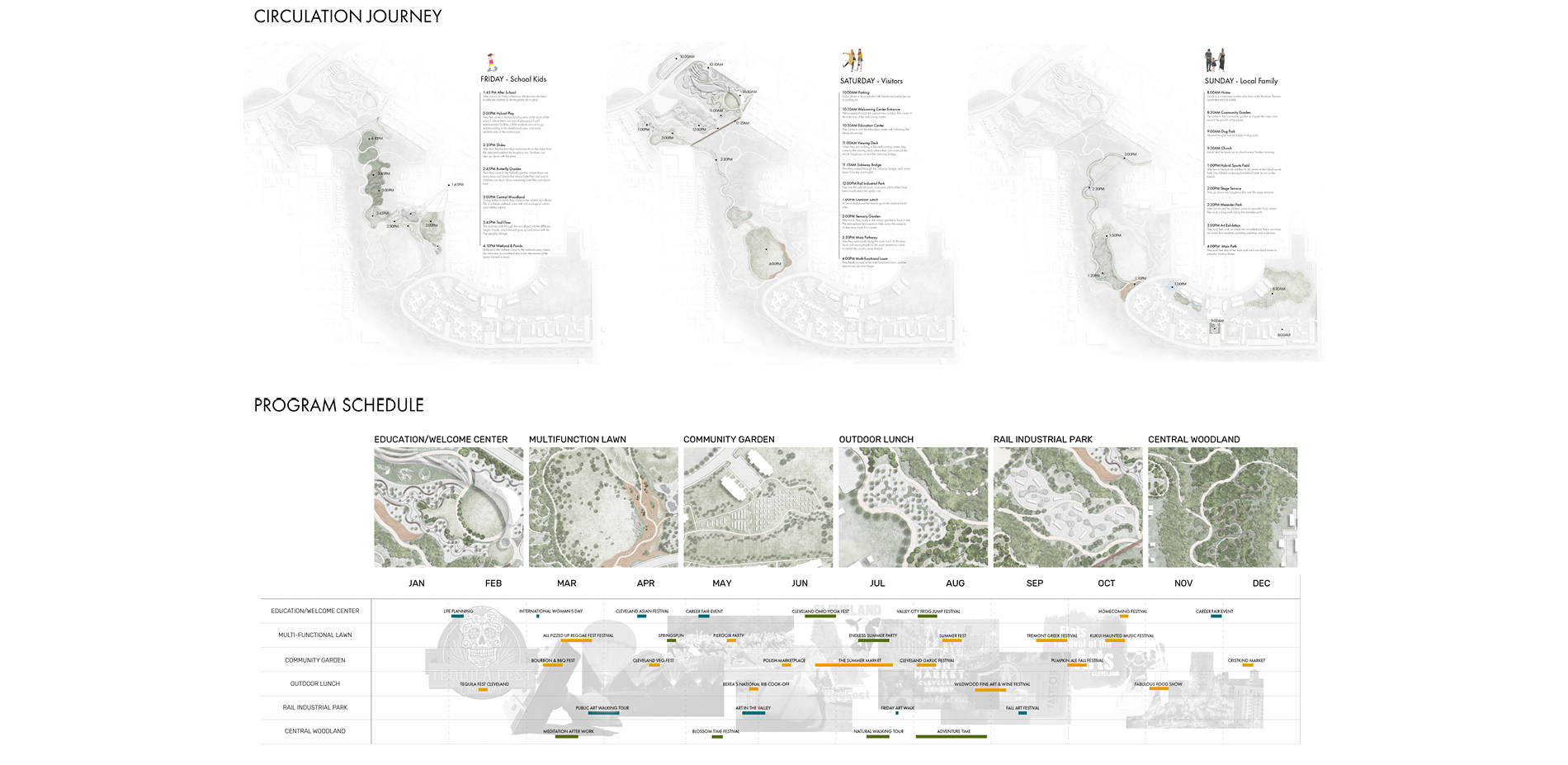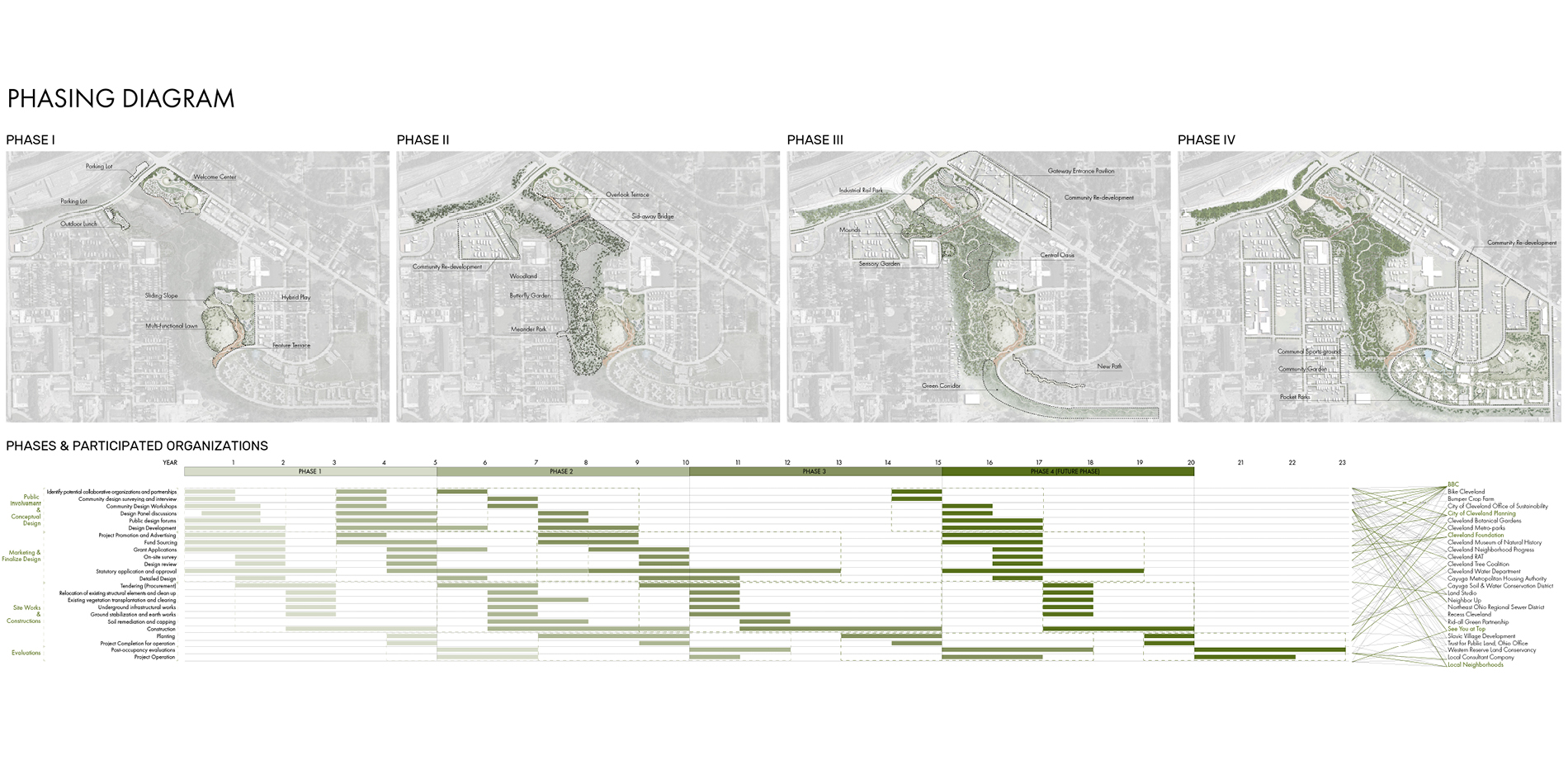Kingsbury Run Nature Reserve: Collective Re-imagination
Honor Award
Analysis and Planning
Cleveland, Ohio, United States
Lok Tim Chan, Student ASLA; Eric Zhenrui Mei, Student ASLA; Echo Xingjian Wang, Student ASLA
Faculty Advisors: Mitch Glass, ASLA
Cornell University
This plan creates the Kingsbury Nature Reserve in Cleveland, Ohio, in collaboration with surrounding disinvested communities. The project is comprehensive at all scales of analysis, maintaining rigor as they move through each of those scales, and we appreciated that the students did a thorough review of prior work done in the area. Their focus on sustainability and community was excellent—we particularly appreciate that they spoke directly with local stakeholders.
- 2021 Awards Jury
Project Credits
Burten, Bell, Carr, Development Inc.
Project Partner & Client
Project Statement
This project aims to provide a reimagination of the Kingsbury Run Nature Reserve for, with, and most importantly by the surrounding local communities that have been long under-served from a deeply embedded long history of environmental injustice. In collaboration with a non-profit community development corporation known as Burten, Bell, Carr Development Inc. (BBC), the project puts a heavy emphasis on analysis and planning exercises with inclusion of community engagement aspects that begins to visualize a bottom-up design approach bringing new possibilities for the local citizens. Through intensive and rigorous mapping, diagramming in a multiscale manner, the complex interplay of various systems, armatures are visualized to understand the contextuality of the site, its immediate region, but also opportunities to leverage as well as critical issues to address. Most importantly a continuous conversation with the partnering organization as well as numerous calls, meetings and presentations with other key stakeholders provided valuable insights and opinions that holds a significant place in the overall analytical and design processes of the project making it highly responsive, dynamic and multidimensional.
Project Narrative
Kingsbury Run Nature Reserve: Collective Re-imagination began its journey with a task, and that was the proposition of a new future for the site in its services for the surrounding neighborhoods. Located in Cleveland, Ohio, the site has gained considerable attention during the last 10-20 years in redevelopment schemes for improving the local communities given their past mistreatments from environmental injustice, toxic dumping in the site that posted serious health hazards for the inhabitants living directly next to it. But also, to fulfill the promises from urban renewals around the site that never came to be as advertised. In order for us to gain a deep understanding of the site, a dive into the analytical approaches in revealing existing contextual complexities was made before engaging in discussions with local stakeholders for meaningful community engagements. Through robust and rigorous site investigation and documentation research, a holistic methodology to “know” the site and the people was developed. And by the exploration into the different systems, their interrelationships, combined with active conversations with stakeholders concerning the prospects of the site’s redevelopment, the rich analytical exercises helped in conceptualization of the project such that it is highly performative, functional and dynamically experiential.
Acknowledging there are countless layers, networks and relationships that exist in the site, its rich history and its surrounding neighborhoods, we began with the regional reading of armatures. From Kingsbury Run’s historic origin as a critical stream that once run through Kinsman neighborhood and many other communities naturally, turned into one of the most contamination waterway from industrial activities and largely toxic dumping later on and now buried underground, a hydrological investigation kick started the project. From visualizing the relationships and implications between sub watersheds and existing open space networks, we begin to see the significance Kingsbury Run Nature Reserve hold in terms of its services ecologically, hydrologically and most importantly, socially. In a radius comparison, it becomes clear the site is the most vital amenity, asset for local neighborhoods but also critical as a ponding site from raining seasons. This was confirmed in later discussion with stakeholders concerns in flooding and the potentiality for natural filtration, ecological enhancements.
Temporally departing from natural systems, connectivity and infrastructural networks as a way of tracing the social conditions and their contextual qualities was visualized. By understanding the densities of different transportation systems (cycling, bus systems, rail networks, automobile grids), one begins to see and realize how isolated, disconnected the site and Kinsman neighborhood really is. But at the time, knowing the peripheral existing and proposed cycling networks, there poses opportunities for the space and communities to reconnect into the larger urban fabrics. Further looking into social opportunities, through identifying the accumulations (or the lack of) amenities, around the site it reflects a critical need for programming and land use diversification to really provide opportunities for local communities.
In an attempt to comprehensively integrate the design of the site into the larger surrounding conditions, under the impression that there are numerous significant projects, proposals scattered across the neighborhoods, (in particularity a major infrastructural development project i.e. the Opportunity Corridor), a diagrammatic summary of all relevant projects and proposals is created allow for a much more sensitive and inclusive design concept.
Changing gears, in a multi scale approach, a closer inspection, examination of existing site conditions was made incorporating documentation research of underground conditions, accessibility, topography and other critical elements at play that would impact the design of the site. This was juxtaposed with the closer look of social dynamics adjacent to the site as a contrast for understanding the limitations, restrictions but also opportunities and potentialities of interventions.
Through 3-dimensional deep sections, site scale analysis was carried out unfolding the intricacy of spatial relationships and landscape systems that would not be visible, legible in other previously used sales. Using sectional diagrams, it revealed the geography of the site by which soil contamination remains an issue requiring treatment, the opportunities for ecological enhancement thereby promoting sustainability, the topographic orientations and potentials for hydrological interventions that build resiliency, but also the historic heritage of the Sidaway Bridge that cuts through the site, potentials of reconnections, diversification of programs to make a profound impact on the surrounding communities.
As these systems are uncovered, they relationships visualized, site conditions understood, a documentation review of previous proposals was made to further enrich the idea bank for opportunities and possibilities. Through examining critical past reports and project documents, a general understanding of prevailing focuses in the design of the space was distilled. These include for example, a robust path network for navigation, allowing local residents to explore the site, integration of educational aspects to enhance spatial interactions, engagements and cater to the surrounding young generations, attractive playscapes that are dynamic and multi-generational in design, and many more.
From there, the analytical efforts are brought to the most critical segment for the project’s development, community engagements. Through sharing of conclusive findings from the pervious iterations of investigation, they are further enriched through dialogues with key stakeholders who have had their own experiences working with local communities, understanding the needs of the people and their editing of the site, the conditions, the issues to address and the visions to project. By comparing the outcomes of the numerous conversations with organizations and individuals, a summary diagram that outlines the most important aspects/concerns of stakeholders was made to facilitate concept of the design.
To address the complexities of site conditions, systems at play, and integration of stakeholders’ views, the concept began with the reinterpretation of Kingsbury Run the stream, the origin and beginning of the site. By reimagining the river flowing through the site, puncturing the site boundaries and permeating into the surrounding neighborhood, it proposes an impactful future that emphasis on possibilities. From a heavily contaminated stream (which was once natural), a problematic and underutilized site to the symbol of life and vitality of water, movement and fluidity, the design intends to link site specific and sensitive, dynamic programming through the different re-imagination of the Kingsbury Run waterway. The idea of meandering paths coursing through the site where local residents and other visitors alike can “flow” through, having different experience was key. It is about the many different journeys one can have through the site, it is about the various experiential qualities, adventures and it is about the empowerment of the local communities, building identities. The design responds sensitively to the development of the Opportunity Corridor and cycling networks through strong pathway connections with integration of programs that are closely relate to the surrounding contexts. From the industrial rail park that actively engages users with the site’s infrastructural background with soil treatment underneath; to central oasis of woodlands and wetlands created though topographic manipulations that creates a range of habitats as ecological hotspots that is also on another hand functions as natural filter for stormwater as well as multi-leveled trail systems; to the featured terrace and hybrid playscapes for all ages that provides opportunities across all four seasons, the design is multifunctional, highly performative and diverse in spatial experiential qualities. This is reflected in an unconventional zoning visualization that maps out gradual transitions in the mood of place, the velocity of movements, sensorial stimulations and potential activities.
Finally, connecting to the stakeholders and the project’s potential in actualization, a detailed phasing diagram with program stages open for various organizations, local communities to partake in is made to further catalyst the discussion in Kingsbury Run Nature Reserve’s new futures.
Kingsbury Run Nature Reserve: Collective Re-imagination as an analysis, research and community engagement intensive envisioning project combines the different qualities of the site and the people to suggest a vastly dynamic possibility that promotes local sustainability, resiliency, diversity and last but not least, social equity. It is a project that imagines with the people.
Plant List:
- Bur Oak
- Red oak
- Wood Poppy
- Goldenrod
- Osage Orange
- Sugar Hackberry
- Sweetbay Magnolia
- Feather reed grass
- Pink hair grass
- Blazing star
- Bushy Aster
- Pin oak
- Purple coneflower
- Red maple
- Sweet Joe-Pye-weed
